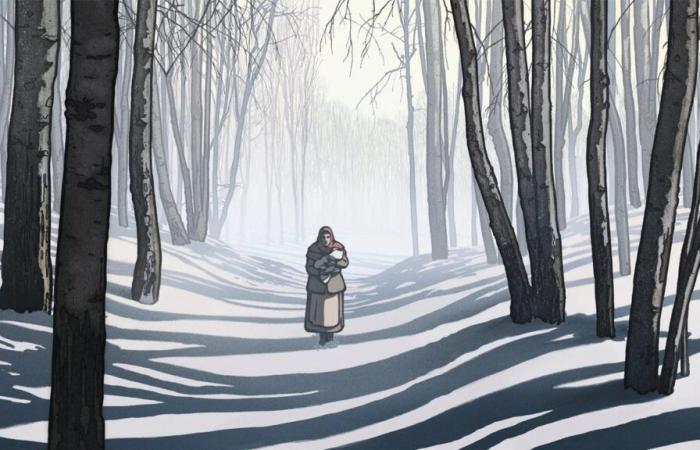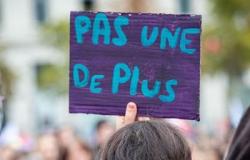Michel Hazanavicius, known for his comedic talents (OSS 117) as for his homages to cinema (The Artist), here reveals an unsuspected facet of his creativity. The director takes the words of Jean-Claude Grumberg, but transcends them with an aesthetic that is both delicate and impactful. The forest, icy and menacing, almost becomes a character in its own right, while the trains of death transform into steel monsters, crushing hope in their path. And yet, in this oppressive atmosphere, bursts of light emerge, gestures of infinite tenderness which remind us that humanity can still resist the unspeakable. Far from betraying the approach of the book, he chooses animation to amplify the universal and dreamlike scope of the story. An approach that evokes the artistic choices of Isao Takahata in The Tomb of the Fireflieswhere visual poetry dialogues with a historical tragedy.
The narration, entrusted to Jean-Louis Trintignant, gives the film an almost sacred aura. His hoarse and calm voice, recorded at the dawn of his own departure, envelops the story with a poignant gravity, like a final lesson transmitted through the ages. At his side, Dominique Blanc and Grégory Gadebois breathe life into the couple of lumberjacks, transcending their role as archetypes to embody a deeply tangible and moving humanity.
An aesthetic at the height of darkness
Animation allows the director to transcend the limits of realism to delve into a symbolic aesthetic of rare strength. The Polish forest, by turns oppressive and protective, imposes itself as a living entity, where the cold bites as much as the solitude. This setting, both a place of danger and of refuge, evokes the tales of our childhood, such as Hansel et Gretel. The carefully crafted chromatic palette alternates between austere and bluish winter tones and luminous bursts – a flickering flame, a piece of red fabric – which pierce the darkness with striking intensity.
The most valuable commodityby Michel Hazanavicius© EX NIHILO – LES COMPAGNONS DU CINEMA – STUDIOCANAL – France 3 CINEMA – LES FILMS DU FLEUVE
France






